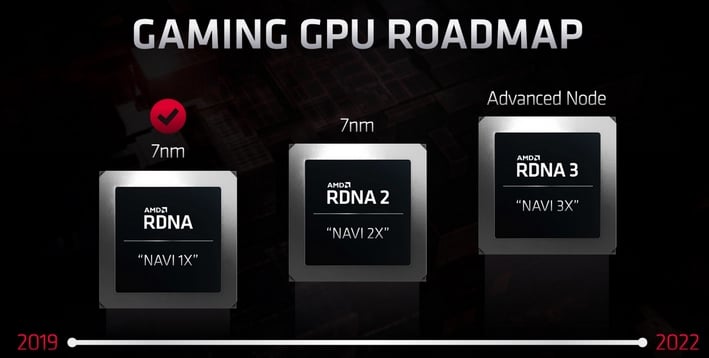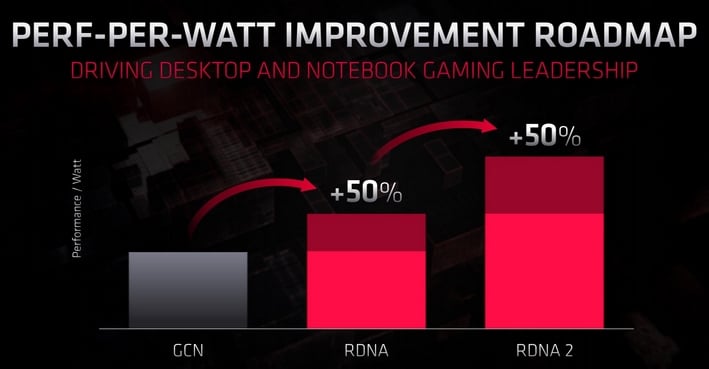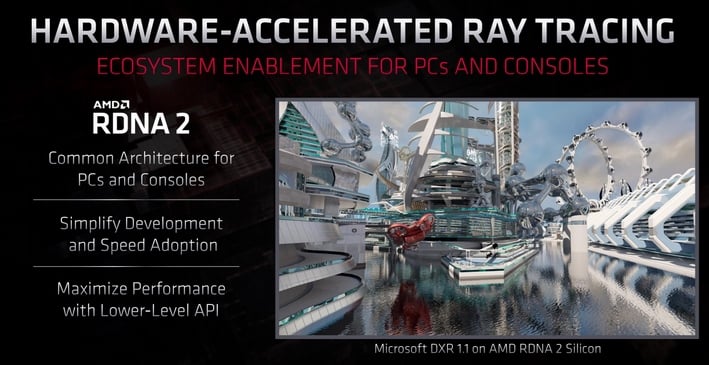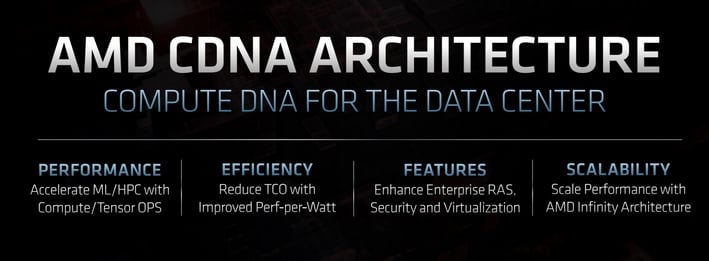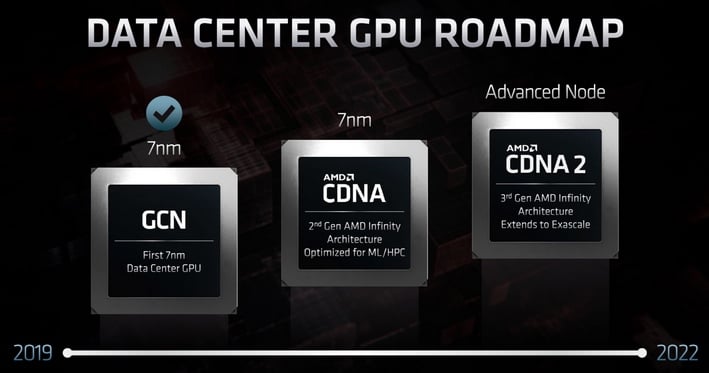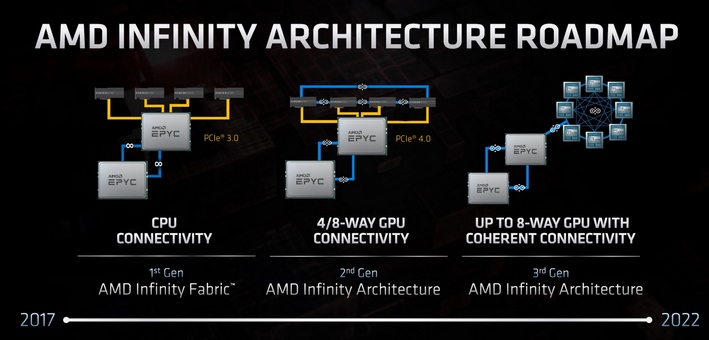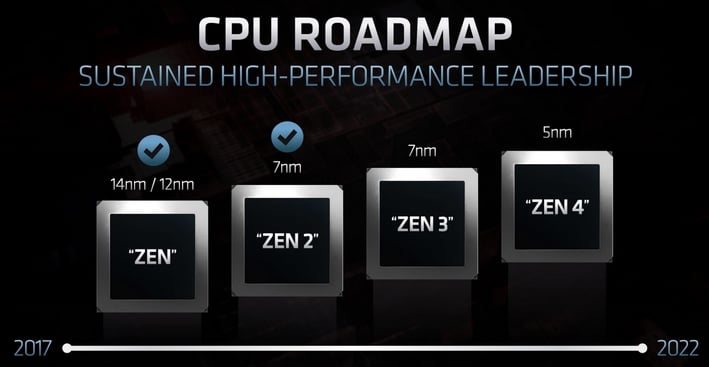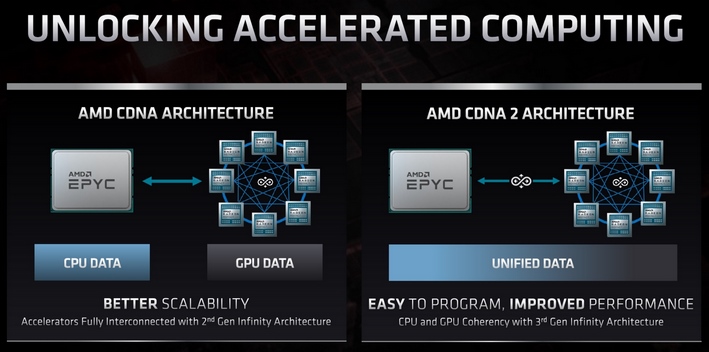AMD Reveals RDNA 2 And CDNA GPU Architecures, Zen CPU Roadmap Details At Financial Analyst Day

AMD held its Financial Analyst Day today and the company offered up a broad overview of what we should expect in terms of roadmap technologies execution over the next few years. Some of the topics that were touched on included next-generation RDNA 2 Navi GPU architectures, completely new CDNA GPUs optimized for the data center, along with the planned roll-out of Zen 3 and Zen 4 processor families.
Don't Call It "Big Navi"
The tech industry has been referring to AMD's next-generation flagship discrete GPUs based on the RDNA 2 architecture as "Big Navi" for a while now. However, it appears that AMD would prefer that we not use that terminology, as it sells its next generation GPU architecture, dubbed RDNA 2, short. This isn’t just an extension of Navi, but rather a second-generation architecture that brings with it improved performance-per-watt and new features that weren't possible with current-generation RDNA graphics products.
Instead, AMD is referring to RDNA 2 as "Navi 2X," and its follow-up GPU architecture will be based on something called RDNA 3 and referred to as Navi 3X. While the company isn't ready to give us any concrete details on Navi 3X, we do already know a bit about Navi 2X courtesy of Microsoft. AMD told us that, though we can't make direct parallels between discrete Navi 2X GPUs and what will be found in the Xbox Series X, because of the console's custom silicon (rated for 12 TFLOPs), it should give us a general idea on what to expect for performance.
In addition, AMD is promising that Navi 2X will deliver "enthusiast-class" performance, excellent power efficiency, and "top-of-stack" GPUs with "uncompromising 4K gaming". That latter point is important; while GPUs like the current Radeon RX 5700 XT are potent, they are no match for NVIDIA's high-end enthusiast-class graphics cards like GeForce RTX 2080 Ti. Hopefully, this means that the flagship Navi 2x SKU will have performance that will be able to go toe-to-toe with whatever NVIDIA drops when Ampere-based GeForce RTX graphics cards eventually arrive.
Finally, AMD says that Navi 2X will support both hardware-based Ray Tracing and Variable Rate Shading, both of which were confirmed during Microsoft's recent Xbox Series X hardware announcement. For those keeping score, Navi 2X is still based on the 7nm process node, while Navi 3X will be using an "advanced node", which we assume means either 7nm+ or 5nm depending on what TSMC can offer the company at the time.
CDNA For Datacenter GPU Accelerators
While AMD has RDNA for its gaming-centric consumer graphics cards, the company is shifting to a new GPU compute architecture for its High-Performance Computing (HPC) and Machine Learning (ML) accelerators. AMD is calling this architecture CDNA, and it promises to provide a roadmap similar to what the company does with EPYC, to outline where the architecture is heading in the future.
Unlike its previous GCN-derived GPU accelerators, CDNA has been designed from the ground-up for ML/HPC applications, and won't have to re-purpose pipelines that were originally intended to speed up game engines. CDNA will leverage what AMD calls its second-generation Infinity Architecture interconnects and the first products based on the architecture will be built on the 7nm process node.
CDNA 2 will be using an "advanced node" and will feature third-generation Infinity Architecture, which will enable CPU and GPU coherencey for more efficient data sharing, and further expand AMD's reach into exascale computing.
Zen 3 And Beyond: Enterprise And Client Processors
AMD reiterated that its first Zen 3-based products will be rolling out later this year. On the server side, this means EPYC 7003 "Milan" processors, while the company also revealed that Zen 3 client processors would also arrive by the end of 2020.
However, AMD won't be releasing all of its Zen 3 processors at once, and instead will stagger the launches through 2020 and 2021. So, it's likely that we'll see the Ryzen 4000 desktop family launch before the end of the year, with Ryzen Threadripper 4000 coming sometime in 2021. Ryzen 5000 series Zen 3-based mobile CPUs will likely be the last to launch in 2021.
Looking past Zen 3, we know that AMD has Zen 4 "Genoa" on the roadmap as well, which will allegedly be using the 5nm process node. As we learned yesterday, Zen 4 EPYC 7004 processor will be featured inside the Lawrence Livermore National Laboratory's El Capitan supercomputer, which is scheduled to be operational in early 2023.


